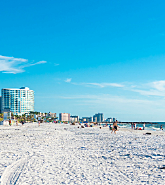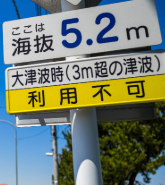The 2011 Tohoku earthquake and its accompanying mega-tsunami highlighted how a single magnitude 9.0 (Mw9) tsunami could impact multiple regions and lines of business. The size of the earthquake was considered beyond what was possible on this plate boundary, and there are many areas worldwide where a massive earthquake and accompanying tsunami could impact coastal exposures over a very wide area.
Global coastal exposure is increasing rapidly including port cities, refineries, power plants, hotels and beach resorts. On regions around the Pacific and parts of the Indian and Atlantic Oceans, some of these exposure accumulations are at frontline risk from the mega-tsunamis that would accompany magnitude 9.0 (Mw9) earthquakes.
Later this year, RMS will release a Global Tsunami Scenario Catalog to provide (re)insurers with a broad and relevant set of tsunami scenarios that include both local and ocean-wide impacts. The tsunamis scenarios have been generated by modeling fault rupture and sea floor deformation associated with earthquakes on the principal subduction zones worldwide, with magnitudes ranging between M8.0-9.5.
For each scenario the tsunami is modeled in three stages – a) the initial generation of the water level changes caused by sudden movements in the configuration of the seafloor, b) tsunami wave propagation, and c) the flooding inundation of coastlines.
For each scenario the tsunami flood is represented as the elevation of the water level at each onshore location in the path of a tsunami. The tsunami flood data also includes the maximum expected inundation depth of tsunami flooding so that users can estimate the level of destruction to different building categories. The tsunami modeling capability has been extensively tested to show the method reproduces the observed coastal water heights from recent tsunamis.
A key element of the work to create the new Global Tsunami Scenario Catalog involved identifying where Mw9 earthquakes had the potential to occur, and hence which were the coastal regions at risk from mega- tsunami. These regions include cities with high insurance penetration such as Hong Kong and Macao, the main Taiwanese port of Kaohsiung, the island of Barbados, as well as Muscat, Oman. Our research also shows that a mega-tsunami as large as Tohoku could even occur in the Eastern Mediterranean – and in fact a mega-tsunami was generated in this region in 365 A.D. A repeat of such a tsunami could impact a wide stretch of coastal cities from Alexandria, Egypt to Kalamata, Greece and Antalya, Turkey.
The Tohoku earthquake and tsunami surprised the world because it occurred on a plate boundary that was not considered capable of producing a giant earthquake. The lessons from Tohoku should be applied to other ‘dormant’ subduction zone plate boundaries worldwide where M9 earthquakes have the potential to occur even though they have not previously been experienced in the past few hundred years of history. The region-wide loss correlations associated with some of these events have the potential to affect multiple lines of property and marine exposures in diverse coastal locations, potentially spanning several countries in a single loss. (Re)insurers wishing to manage their regional coastal exposures should be testing their exposure accumulations against a credible set of the largest-scale earthquake and tsunami scenarios.






